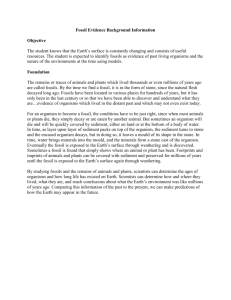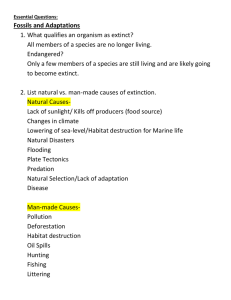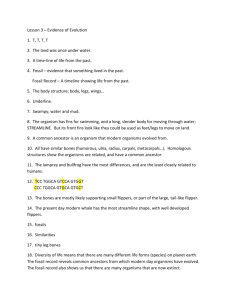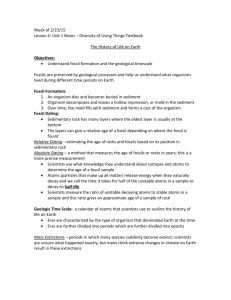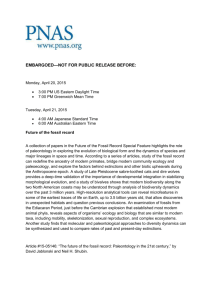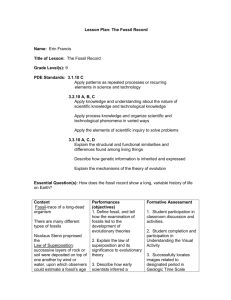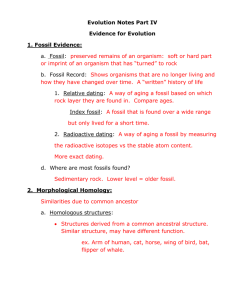Evolution Quiz: Evidence & Theory for High School
advertisement
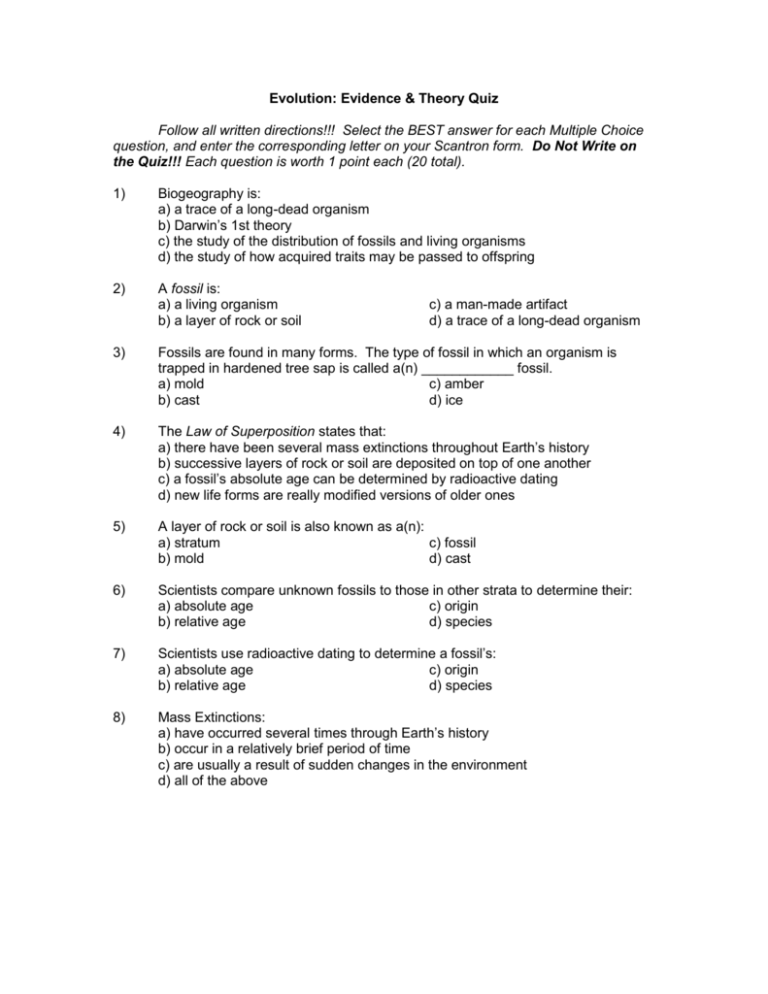
Evolution: Evidence & Theory Quiz Follow all written directions!!! Select the BEST answer for each Multiple Choice question, and enter the corresponding letter on your Scantron form. Do Not Write on the Quiz!!! Each question is worth 1 point each (20 total). 1) Biogeography is: a) a trace of a long-dead organism b) Darwin’s 1st theory c) the study of the distribution of fossils and living organisms d) the study of how acquired traits may be passed to offspring 2) A fossil is: a) a living organism b) a layer of rock or soil c) a man-made artifact d) a trace of a long-dead organism 3) Fossils are found in many forms. The type of fossil in which an organism is trapped in hardened tree sap is called a(n) ____________ fossil. a) mold c) amber b) cast d) ice 4) The Law of Superposition states that: a) there have been several mass extinctions throughout Earth’s history b) successive layers of rock or soil are deposited on top of one another c) a fossil’s absolute age can be determined by radioactive dating d) new life forms are really modified versions of older ones 5) A layer of rock or soil is also known as a(n): a) stratum c) fossil b) mold d) cast 6) Scientists compare unknown fossils to those in other strata to determine their: a) absolute age c) origin b) relative age d) species 7) Scientists use radioactive dating to determine a fossil’s: a) absolute age c) origin b) relative age d) species 8) Mass Extinctions: a) have occurred several times through Earth’s history b) occur in a relatively brief period of time c) are usually a result of sudden changes in the environment d) all of the above 9-11) Matching: Match each type of structure with its description or example 9) Analogous Structure 10) Homologous Structures 11) Vestigial Structures a) structures that are no longer useful in modern organisms b) structures that may look very similar but perform different functions c) structures that look differently, but may perform similar functions 12) The type of evolution which focuses on the change of populations of organisms over time is called: a) Darwinian Evolution c) Lamarckian Evolution b) Biological Evolution d) Fossil Evolution 13) Which of the following is an example of an acquired trait? a) brown fur c) playing an instrument b) claws d) blood type 14) “Organisms that are best suited to their environment will reproduce more successfully” is the theory of: a) Law of Superposition c) Biogeography c) Artificial Selection d) Natural Selection 15) Darwin’s theory of Descent with Modification states: a) there have been several mass extinctions throughout Earth’s history b) newer forms appearing in the fossil record are actually modified descendants of older species c) those members better equipped to survive harsh conditions will produce more offspring d) over time, the number of organisms with favorable traits will increase within a population 16) The types of traits that are considered “favorable” within a species is mostly dependent on: a) their preferences c) acquired traits b) artificial selection d) their environment 17) When a harmless species evolves to resemble a dangerous one, it is called: a) mimicry c) Divergent Evolution b) camouflage d) Lamarckian Evolution 18-20) Matching: Match each pattern of evolution with its appropriate description or example 18) Divergent Evolution 19) Coevolution 20) Convergent Evolution a) the evolution of 2 or more species in close association b) occurs when the environment selects the phenotype c) when 2 related species become more dissimilar


